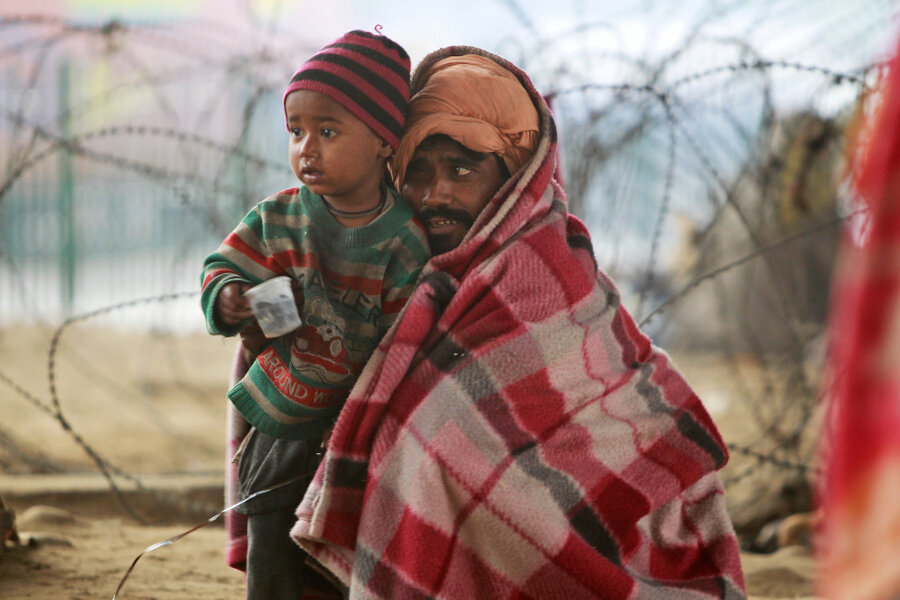The prospect of no people living in extreme poverty
Loading...
For the first time in recorded history, fewer than 1 in 10 people are living in “extreme poverty,” according to a new World Bank report. Just four decades ago, more than 4 in 10 people lived at such an income level, which the bank defines as less than $1.90 a day. This progress has been so steady that many experts now ask if a zero level of extreme poverty could soon be possible.
The reason for such speculation is that so many countries have lifted people out of the worst of living conditions that the world may have crossed a mental threshold. As more of the poor learn their plight is not inevitable, attitudes shift. According to poverty expert Esther Duflo at the Massachusetts Institute of Technology, the anticipation of future poverty has long exacerbated current poverty. Yet with more reports of progress, the task of alleviating poverty gets easier.
The current goal of the World Bank and many other aid agencies is to have only three percent of people living in extreme poverty by 2030. About half of the world’s countries have already achieved that rate. Much of the progress over the past quarter century has been in Asia, especially China, India, and Indonesia.
In 2000 the world’s countries agreed on a goal to cut poverty to half of the 1990 level by 2015. This collective effort spawned so much innovation and cooperation that the goal was reached at least five years early. Someone now escapes extreme poverty every 1.2 seconds, according to one estimate.
Much of today’s poverty is now concentrated in sub-Saharan Africa. While its rate has fallen to 41 percent from 54 percent since 1990, the actual number of people in extreme poverty has risen because of high population growth. And just two countries in Africa, Nigeria and the Democratic Republic of Congo, will be home to 44 percent of people living in extreme poverty by 2050 if trends continue, according to the Bill & Melinda Gates Foundation. Earlier this year, Nigeria overtook India to become the country with the world’s highest number of people living in extreme poverty, according to the Brookings Institution, even though its population is about one-seventh that of India.
Solutions to poverty are both well known and widely disputed, but the World Bank focuses on what it calls “human capital,” or raising up the education and health standards of the poor, with a special focus on women and girls. “There’s so much desire to have access to education, to make sure that your children are not underfed,” says the bank’s president, Jim Yong Kim.
With each new report on the material progress of the poor, the world must also celebrate something deeper. A rise in expectations among the poor about their future is really a realization about their latent capabilities. Awakening those capabilities will help humanity more quickly achieve the goal of no people living in extreme poverty.







